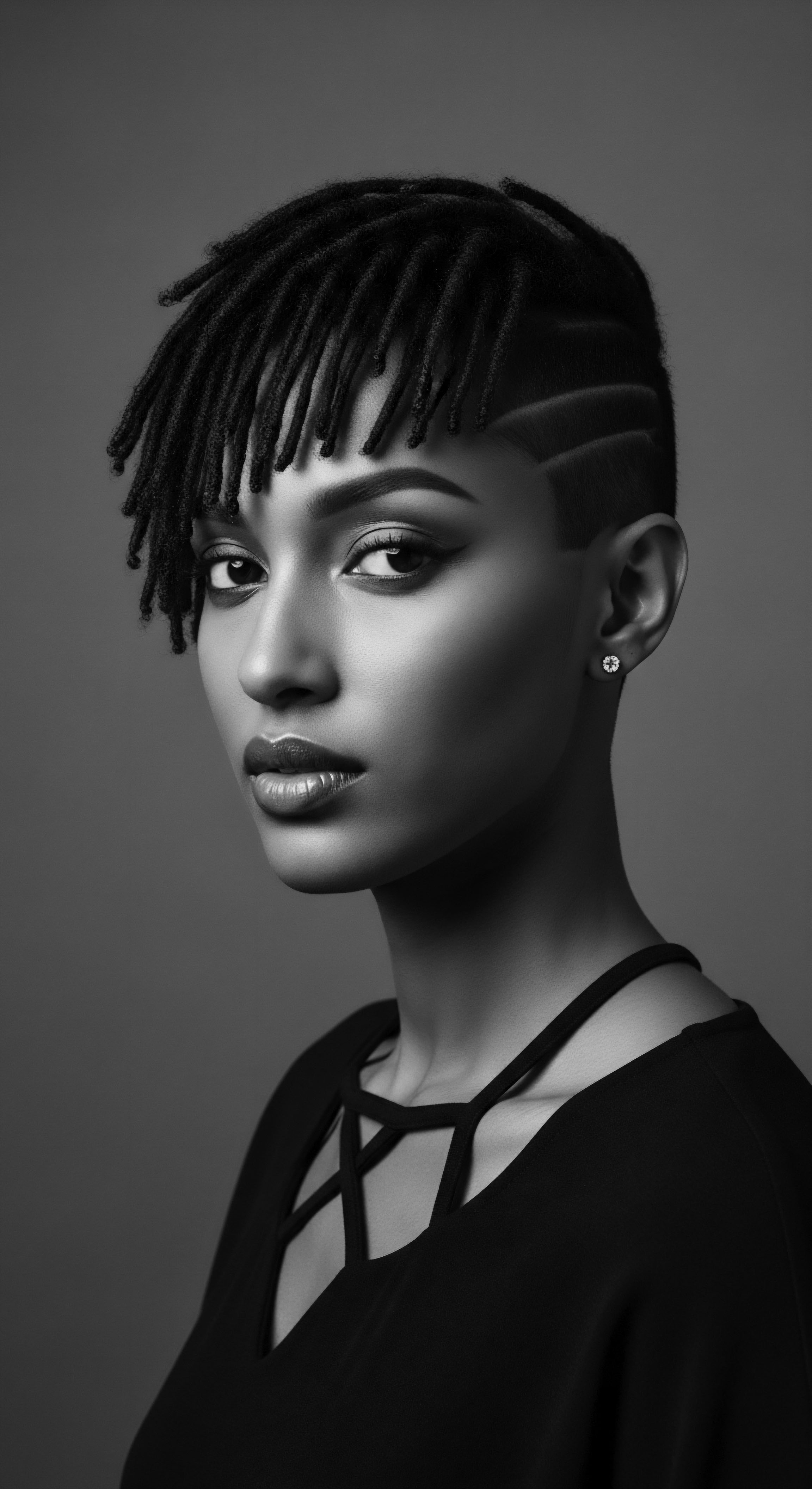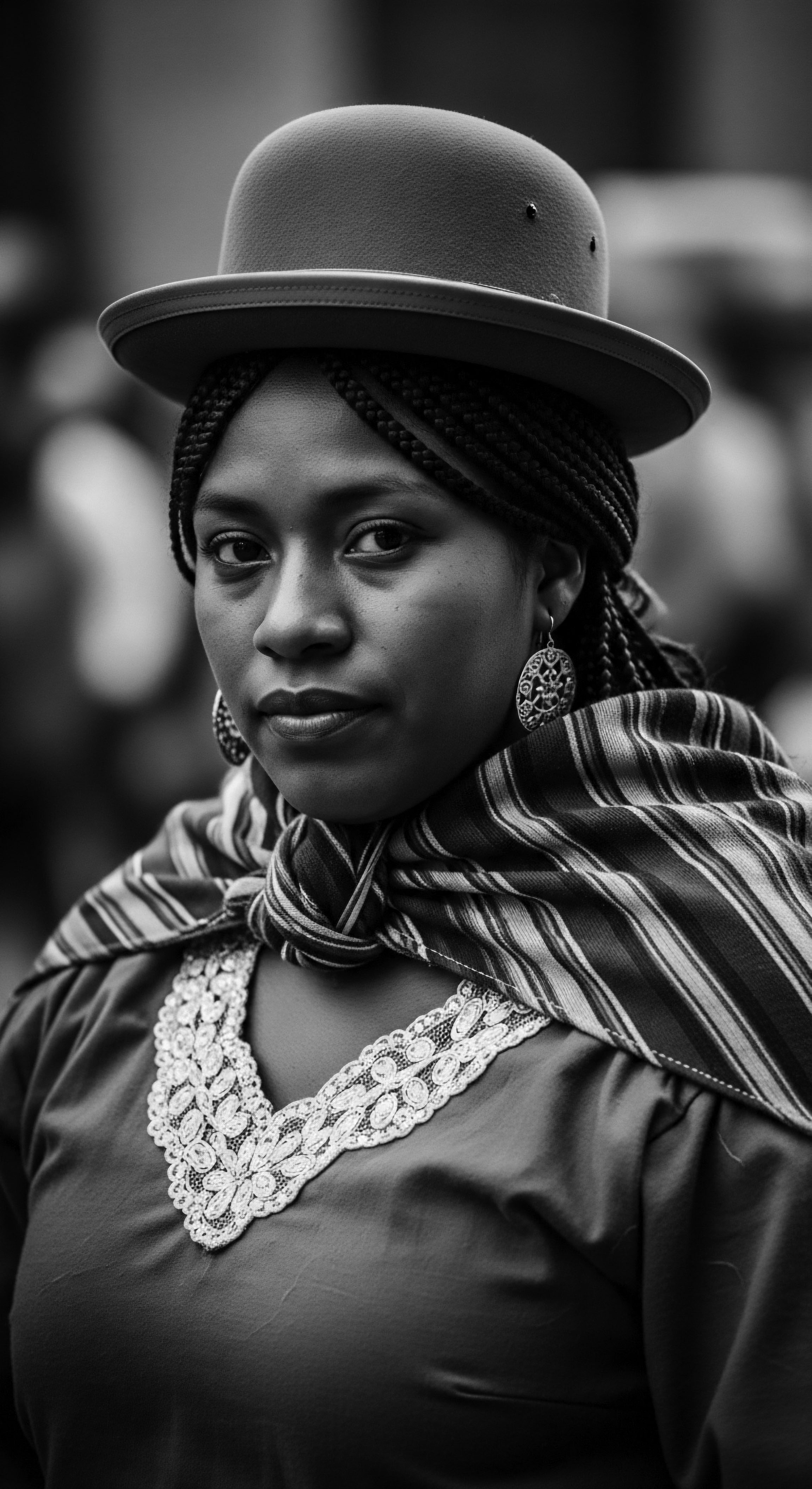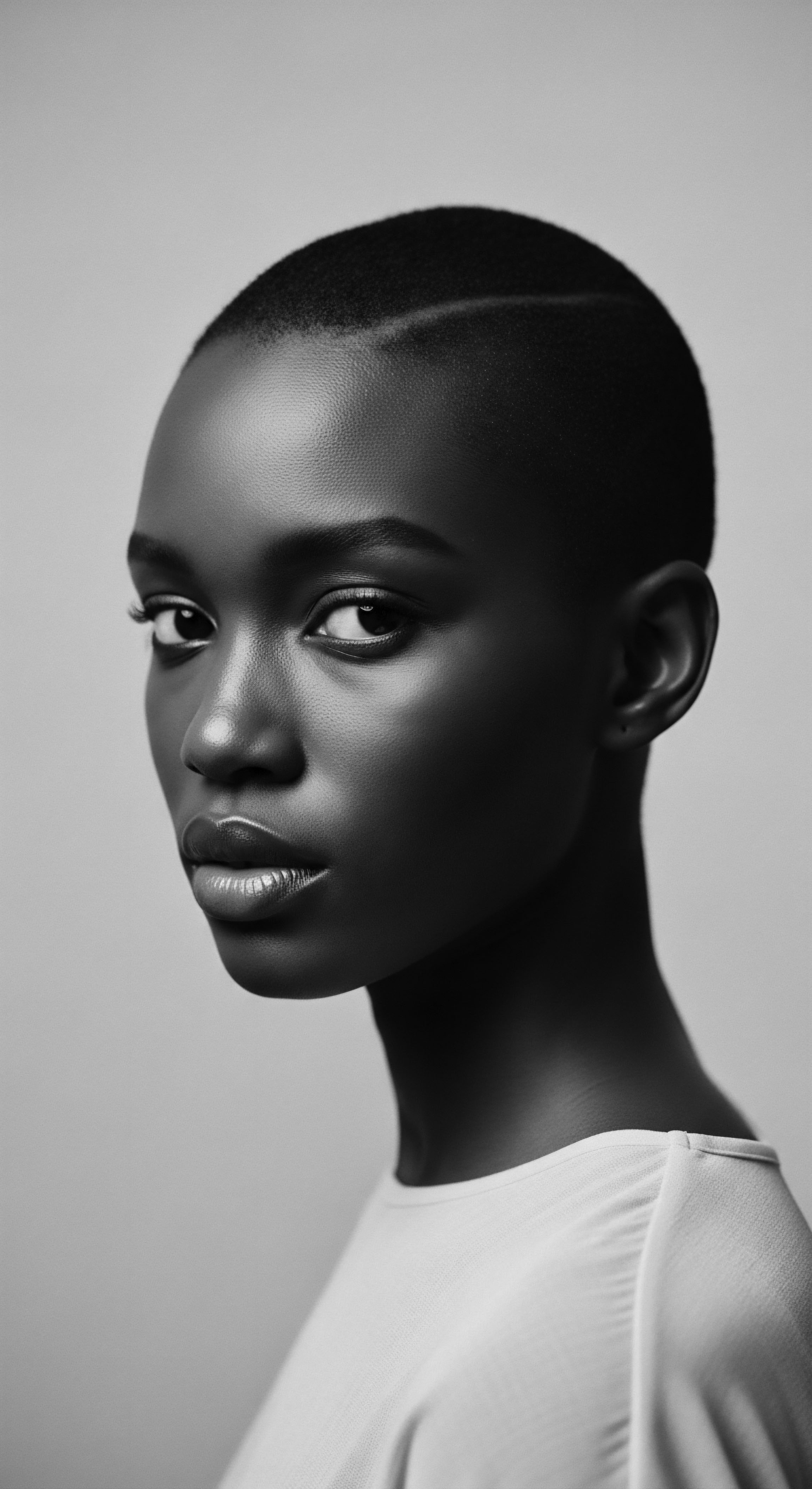
Roots
Consider for a moment the very earth beneath our feet, the soil that gives rise to sustenance and shelter. Within its quiet depths lie profound connections to our own physical selves, particularly our hair. For those with textured hair, this connection runs deeper than simple biology; it echoes a heritage of resilience, wisdom, and beauty passed down through generations. The very concept of care for our strands often finds its genesis in ancestral practices, where ingredients drawn from the earth were not just remedies, but vital elements of identity and communal well-being.
Today, we turn our attention to the reddish clays, those mineral-rich pigments of the earth, and inquire into their particular gifts for the health and growth of textured hair. This is not a modern discovery, but a continuation of a profound conversation with nature, a dialogue held for centuries by those who understood the potent properties of natural elements. Understanding red clay’s influence on our hair demands a look back to the source, to the fundamental composition of hair and the ancient knowledge that informed its care.

Hair’s Elemental Foundation
Hair, in its magnificent variations of curl, coil, and wave, stands as a complex biological structure. Each strand emerges from a follicle nestled within the scalp, a tiny factory of growth and sustenance. The health of this follicle, and indeed the entire hair shaft, relies heavily on a steady supply of essential minerals and nutrients. These are the very building blocks, the silent architects of strength, elasticity, and vitality for every coil and kink.
Our ancestors, observant and intuitive, understood this on a visceral level, even without the language of modern biochemistry. They recognized thriving hair as a sign of overall well-being, a reflection of harmony with one’s environment and diet.
Red clay, with its rich mineral composition, holds ancient wisdom for textured hair, echoing traditions of care across generations.
From a heritage perspective, the earth itself was often considered a living entity, providing not just food but also the materials for healing and adornment. Hair, intimately linked to identity and status in many Black and mixed-race cultures, received dedicated attention, frequently involving earth-based treatments. The use of clays, particularly those vibrant with color, held symbolic weight alongside their practical benefits.

What Minerals Define Red Clay and Textured Hair’s Needs?
Red clays draw their distinctive hue from a high content of Iron Oxides. This mineral, beyond its visual appeal, is a cornerstone for biological processes within the human body. Iron, a central component of hemoglobin, facilitates oxygen transport throughout the body, including to hair follicles, which is essential for healthy growth. Beyond iron, red clays often contain a complex blend of other minerals, including Silica, Magnesium, Calcium, and Potassium.
These minerals represent a spectrum of benefits. Silica is known to strengthen hair shafts and promote elasticity, which is particularly relevant for textured hair, prone to breakage due to its unique curl patterns. Magnesium contributes to the production of proteins, including keratin, the primary protein composing hair. It also helps regulate calcium levels, preventing potential buildup around follicles that could hinder growth.
Calcium itself is crucial for hair structure and strengthening follicles. Potassium helps maintain moisture balance, a continuous need for textured strands. These elements, present in the earth, offer a natural synergy with the complex biology of our hair.

How Did Ancestral Understanding Shape Hair Mineral Use?
Ancestral communities, lacking microscopes and laboratories, observed, experimented, and passed down knowledge through oral traditions and communal practices. They understood the efficacy of earth materials not through scientific breakdown, but through generations of empirical evidence. For instance, the Himba women of Namibia traditionally apply a mixture of butterfat and red ochre, known as Otjize, to their skin and hair. This practice, dating back centuries, serves not only as a cosmetic and cultural marker but also as protection from the harsh desert climate and even as a mosquito repellent.
The red ochre, a type of clay containing iron oxide, signifies a profound connection to the earth and its protective powers. This application provided sun protection and likely contributed to the overall health and resilience of their hair in an arid environment.
Such practices reveal a deep understanding that the earth offers more than just color; it provides essential elements for physical well-being. The knowledge of which clays were beneficial for specific hair needs, whether for cleansing, conditioning, or protection, was embedded in communal rituals and daily life, becoming an inseparable part of cultural identity.

Ritual
The journey of textured hair care, from ancient practices to modern routines, is rich with ritual. These rituals are not merely functional acts; they are imbued with cultural significance, ancestral memory, and a spirit of intentional nourishment. Red clay, a silent witness to countless generations of hair care, occupies a special place within this historical continuum, influencing techniques, tools, and transformations. The application of these earth-borne materials transcends simple cleansing, becoming a ceremony of connection to heritage, to self, and to community.

Traditional Styling and the Clay Connection
Throughout history, in diverse communities with textured hair, styling has been far more than aesthetic choice. It communicates status, age, marital state, and spiritual beliefs. Earth-based pigments, particularly red ochre or other reddish clays, played a noteworthy role in these expressions. Consider the Pokot tribe in Kenya, where young men and women would smear their hair with red clay during significant events to appear presentable to elders and visitors.
Similarly, Samburu and Rendille warriors engage in ritualistic hair-dyeing processes using red ochre clay and animal fat, signifying their status and identity. These applications demonstrate not only a cosmetic effect but also a deeply symbolic one, connecting the individual to their collective heritage.
The inherent properties of red clay, its ability to cleanse and absorb excess oils while also offering a conditioning effect, made it a practical choice for hair care before the advent of commercial products. It normalized and balanced the hair fiber, providing softness and minimizing frizz. This functional benefit supported the creation and maintenance of various ancestral styles, from intricate braids to sculpted forms.
Red clay’s absorption and conditioning properties underpinned its ancient use in styling, providing a historical bridge to modern care.
The acts of mixing, applying, and rinsing the clay were often communal, fostering bonds and passing down wisdom from elder to youth. These gatherings reinforced the cultural importance of hair and its care as a shared legacy.

How Does Red Clay Shape Hair’s Texture and Appearance?
The mineral composition of red clay directly influences its impact on hair texture and appearance. Its content of Iron Oxide not only lends color, which can subtly enhance red, brown, and dark hair tones, but also contributes to improved microcirculation in the scalp, potentially aiding nutrient transport to hair tissues. Beyond coloring, the presence of minerals like Silica, Magnesium, Calcium, and Potassium offers tangible benefits.
Silica, a component of sand, can act as a gentle exfoliant for the scalp, helping to remove impurities and excess oil, while also promoting a glossy sheen on the hair. Magnesium and calcium contribute to strengthening hair strands and can enhance the overall appearance, adding volume and softness.
The clay’s absorbent nature helps regulate sebum production, making it beneficial for oily scalps without stripping essential moisture from the hair itself. This gentle yet effective cleansing action means textured hair maintains its natural oils, which are crucial for its unique structure and curl definition.
Benefits of Red Clay for Textured Hair ❉
- Deep Cleansing ❉ Red clay absorbs excess oil, impurities, and product buildup from the scalp and hair. This detoxifying effect promotes a healthier scalp environment, which is vital for new hair growth.
- Enhanced Microcirculation ❉ The iron oxide in red clay can stimulate blood microcirculation in the scalp, supporting nutrient delivery to hair follicles.
- Structural Fortification ❉ Minerals such as silica, magnesium, and calcium help strengthen the hair shaft, reducing breakage and improving elasticity. This is particularly valuable for textured hair types which are often more susceptible to damage.
- Moisture Balance ❉ While absorbing excess sebum, red clay still helps maintain the hair’s natural moisture, leading to reduced dryness and frizz.
- Added Body and Sheen ❉ Anecdotal evidence suggests red clay can add natural volume and a healthy sheen to hair, making it more manageable.
These properties speak to a heritage of care that prioritizes natural balance and resilience. The tools used alongside clay—hands, natural combs, and communal spaces—were extensions of this philosophy, simple yet powerful instruments for maintaining hair health and cultural continuity.
| Ancient Practice Context Himba women's otjize application for protection and cultural identity (Namibia). |
| Minerals & Properties Iron oxide for red pigment, UV protection, cleansing (ochre). |
| Contemporary Relevance for Textured Hair Validates sun protection, natural conditioning for textured hair, and the importance of ingredient sourcing. |
| Ancient Practice Context Traditional cleansing and conditioning across African communities. |
| Minerals & Properties Magnesium, silica, potassium, calcium for absorption, gentle cleansing, and nourishment. |
| Contemporary Relevance for Textured Hair Supports the use of natural clays as a gentle alternative to harsh shampoos, preserving moisture balance. |
| Ancient Practice Context Use of red clay for ceremonial hair dyeing and styling (e.g. Samburu, Pokot). |
| Minerals & Properties Iron oxide for color enhancement and scalp stimulation. |
| Contemporary Relevance for Textured Hair Explores natural hair color enhancement, improved scalp circulation for hair growth, and the cultural dimension of hair. |
| Ancient Practice Context These practices demonstrate how ancient wisdom about earth’s offerings continues to shape understanding of textured hair wellness. |

Relay
The legacy of red clay in textured hair care represents a profound relay of knowledge, a continuous transmission from ancient practices to modern understandings. This enduring wisdom, rooted deeply in ancestry, informs our contemporary approach to holistic care, problem-solving, and ultimately, hair as a testament to identity and heritage. It is a dialogue between past and present, where scientific inquiry often affirms the empirical observations of those who came before us.

Holistic Care from Ancestral Wisdom
For generations, especially within Black and mixed-race communities, hair care has been intrinsically linked to overall wellness. Ancestral approaches viewed the body as an interconnected system, where the health of one part, like hair, reflected the balance of the whole. This holistic view meant that remedies for hair were often drawn from the same sources that nourished the body and soul. Red clay, applied externally, connected individuals to the earth, a symbolic and literal grounding.
Its use was often accompanied by other natural ingredients, passed down through family lines, each chosen for its specific properties. The integrity of ingredients, the mindful application, and the patience required were all components of this holistic system, fostering not just physical health but also spiritual alignment.
The use of earth elements for body and hair care has been a human practice since prehistory. In African communities, various clays were used for cleansing, protection, and enhancing beauty. For instance, in the Igbo community of Nigeria, women used “edo” to dye their hair, among other cosmetic uses of clay. This speaks to a historical continuity, where the elemental composition of clay offered both aesthetic and functional benefits.

Does Red Clay Address Common Textured Hair Concerns?
Textured hair, with its unique curl patterns and susceptibility to dryness and breakage, presents specific care considerations. Red clay’s mineral profile provides a compelling response to many of these concerns. Its ability to absorb excess sebum and impurities helps regulate an oily scalp, which can otherwise hinder hair growth and contribute to issues like dandruff. A clean, balanced scalp is a foundational requirement for healthy hair.
Beyond cleansing, the minerals in red clay such as Silica, Magnesium, and Iron contribute to hair shaft strength and elasticity. Iron, critical for oxygen transport to hair follicles, plays a part in supporting robust growth. Magnesium is essential for protein synthesis, including keratin, which forms the core of hair.
It also helps manage calcium levels, which can accumulate and impede hair follicles. This mineral synergy helps mitigate common problems such as breakage and thinning that textured hair can experience.
The deep cleansing and strengthening properties of red clay, rooted in its mineral composition, speak to generations of textured hair wisdom.
The anti-inflammatory properties often attributed to clays can also soothe irritated scalps, addressing discomfort and creating a more conducive environment for healthy hair growth.
Red Clay’s Role in Problem-Solving ❉
- Scalp Detoxification ❉ Red clay can help remove toxins, product buildup, and excess oil, creating a healthier scalp environment. This is particularly useful for congested scalps that may impede growth.
- Hair Strengthening ❉ Minerals like iron, silica, and magnesium reinforce the hair cuticle, reducing vulnerability to breakage, a frequent concern for textured hair types.
- Moisture Retention ❉ While cleansing, red clay does not typically strip the hair of its natural oils, helping to maintain essential moisture and prevent dryness that can lead to brittleness.
- Frizz Reduction ❉ By cleansing gently and helping to lay the hair cuticle flat, red clay can contribute to reduced frizz and enhanced curl definition.
The practice of applying clay masks, whether as a full hair treatment or a targeted scalp regimen, directly stems from these historical insights. It represents a conscious choice to incorporate materials that have stood the test of time, validated by both centuries of practice and modern scientific understanding. The ancestral knowledge of these earth elements, relayed through generations, empowers us to approach hair care not as a fleeting trend, but as a deep connection to our heritage and well-being.
| Mineral Present in Red Clay Iron Oxide |
| Hair Health Benefit Promotes oxygen transport to follicles, supports growth, enhances natural hair color. |
| Ancestral Observation and Modern Understanding Observed in traditional use for pigmentation and vitality (e.g. Himba, Samburu); science explains hemoglobin link. |
| Mineral Present in Red Clay Silica |
| Hair Health Benefit Strengthens hair shafts, improves elasticity, adds sheen, acts as gentle exfoliant. |
| Ancestral Observation and Modern Understanding Ancient understanding of resilient hair; modern science confirms role in collagen and hair structure. |
| Mineral Present in Red Clay Magnesium |
| Hair Health Benefit Contributes to protein synthesis (keratin), soothes scalp, aids in healthy growth. |
| Ancestral Observation and Modern Understanding Recognized for its calming and restorative properties; science links it to cellular processes. |
| Mineral Present in Red Clay Calcium |
| Hair Health Benefit Crucial for strong hair structure and follicle health. |
| Ancestral Observation and Modern Understanding Understood through generations as an essential mineral for overall strength; modern biology supports its role in hair. |
| Mineral Present in Red Clay Potassium |
| Hair Health Benefit Helps maintain moisture balance, especially important for textured hair. |
| Ancestral Observation and Modern Understanding Empirically noted for conditioning effects; contemporary understanding validates its role in hydration. |
| Mineral Present in Red Clay These minerals, from earth's bounty, continue to underpin the efficacy of red clay in textured hair care, connecting ancient wisdom to modern scientific understanding. |

Reflection
As we consider the journey from earth to strand, a profound truth emerges ❉ the relationship between red clay and textured hair is more than a superficial application. It is a living testament to an enduring heritage, a continuum of knowledge and care that transcends time. The minerals residing within these reddish soils—iron, silica, magnesium, calcium, and potassium—are not merely chemical elements; they are echoes of ancestral wisdom, whispers of generations who found wellness and identity in the very ground beneath their feet.
Roothea’s ‘Soul of a Strand’ ethos reminds us that every curl, every coil, every wave carries a story. It is a story written in the elemental biology of the hair itself, shaped by the hands that styled it, and colored by the cultural contexts in which it thrived. The red clays, used in ancient rituals for protection, cleansing, and adornment, are threads in this rich fabric. They stand as a powerful symbol of self-sufficiency, of finding strength and beauty in the natural world.
In a world that often seeks quick fixes and disconnects us from natural rhythms, returning to the humble clay is a conscious act of reclamation. It allows us to honor the ingenious practices of our forebears, those who intuitively understood the benefits of earth-rich materials for hair and overall well-being. This understanding empowers us to choose ingredients not just for their scientific efficacy, but for the profound sense of connection they offer to a lineage of resilience and beauty. The quest for healthy textured hair becomes a personal journey, certainly, but also a communal one, reflecting a legacy of care that continues to blossom, strand by beautiful strand.

References
- Chaudhri, S. & Jain, N. K. (2009). Cosmetic Science ❉ Theory and Applications. Pragati Prakashan.
- Cole, H. M. & Aniakor, C. C. (1984). Igbo Arts ❉ Community and Cosmos. University of California Press.
- Greene, J. P. (2006). Imperatives, Behaviors, and Identities ❉ Essays in Early American Cultural History. University of Virginia Press.
- Kalu, O. U. (1999). Power, Poverty and Prayer ❉ The Challenges of Poverty and Pluralism in African Christianity, 1960-1996. Peter Lang.
- Lambert, L. (2001). Hair Story ❉ Untangling the Roots of Black Hair in America. St. Martin’s Press.
- Mpako, N. Matike, N. Ekosse, G. I. & Ngole, V. M. (2011). Indigenous knowledge applied to the use of clays for cosmetic purposes in Africa ❉ an overview. Indilinga ❉ African Journal of Indigenous Knowledge Systems, 10(2), 141-150.
- Nelda, M. (2004). African Americans and the New South ❉ Crises of Leadership, 1960-1980. Transaction Publishers.
- Toliver, S. R. (2015). Binti. Tor.com.
- Ukwu, K. (2000). Hair in African Art and Culture. Museum for African Art.
- Willis, D. (1989). Black Photographers, 1840-1940 ❉ An Illustrated Bio-Bibliography. Garland Publishing.
